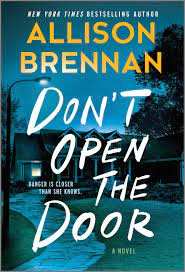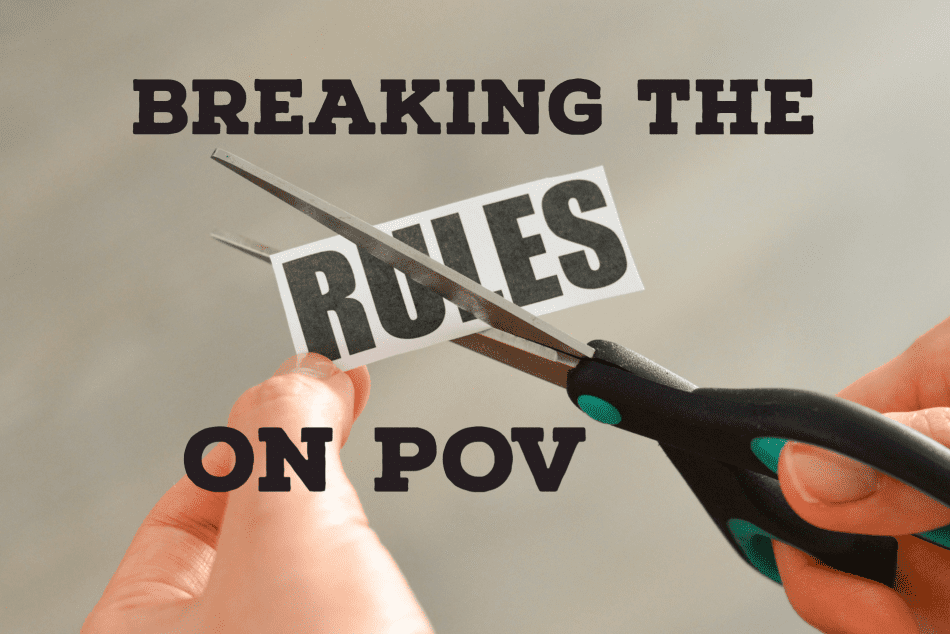By Allison Brennan
Point-of-view is how you tell your story — through whose eyes we are seeing and living the fictional world you create. The key point here: this is the world you create.
YA author Lauren Oliver said, “That is the strangest thing about the world: how it looks so different from every point of view.”
And that, in a nutshell, is what makes being a writer so damn fun. You can see the world through different eyes — the eyes of your characters. It’s also what makes POV so important: the story changes based on each POV’s subjective view.
You’ll hear a lot of advice about POV. For new authors, strict rules can be beneficial—until you find your writing chops. Sometimes rules are stifling. I am not a POV purist.
So, what are these so-called rules?
You can’t use more than one POV per book
Unless you’re writing a first-person mystery (and I’ve read first person mysteries that successfully incorporate a second or even third POV in alternate chapters), you can use more than one POV in a book. It’s your story. If it is best served with one POV, write it that way. Or is the story more effectively told with ten POVs? I say, go for it.
As an aside: I’ve heard in the romance world that you can only have two POVs (hero/heroine) or maybe three (villain in romantic suspense.) I’ve heard in the thriller world that you can only have five POVs. (The amazing Steve Berry has a workshop about POV.) The two, three, five POVs work for the authors who advocate for them—meaning, they’ve found success with this format. They believe you too will find success by doing the same. Maybe you will — but it won’t be because you followed their rules.
My very first book The Prey, published seventeen years ago, had eleven POVs. The primary POVs were the heroine, the hero, the hero’s brother, the villain, and a mentally challenged secondary character. But I incorporated other POVs when I needed them to tell the story — including a victim (who died) and a victim (who lived) and more. The editor who bought the book loved the story, we did some revisions, and it was published and hit the New York Times extended list.
My second book The Hunt had nine POVs. My editor read my first draft and questioned the number of POVs. She said, “You didn’t have this many in The Prey.” Ironically, I had more in The Prey.
Here I learned an important lesson: it’s not how many POVs, it’s how well they’re done.
Now, when I’m writing, I always ask, Is this the best POV for this scene? Do I need this POV character? And, the most important question: Does this POV make the story better?
Over the last 17 years, I’ve written books with one point of view and books with more than ten points of view. Don’t Open the Door that comes out this month has three; Seven Girls Gone, which comes out in April, has seven; coming this August, has nine.
You can’t use more than one POV per chapter
A lot of writers like the style of one POV per chapter, and sometimes this works best. Some writers like more than one POV per chapter. Sometimes this works best.
On the heels of this rule is You can’t use more than one POV per scene. Again, this is an arbitrary rule. I’ve heard from other authors and editors that you need a scene break if you change POV. I’ve pushed back on this — and usually win. Why? Because to me, a scene break means that you have a change in time or place.
Then key to changing POV within a chapter or scene is the transition. To smoothly transition, I name the new viewpoint character with a deep internal thought so the reader clearly knows that I’m in a new POV. Or, I’ll have some action happen where the transition to another POV is organic — such as having a new character enter the room.
Also, if you’re writing romance, shifting POV multiple times in a love scene can be a powerful tool to connect emotionally with both characters. If you’re writing a thriller, shifting POV multiple times in a high-action scene can increase suspense and tension. Putting in a scene break each time destroys the flow of action.
Experiment — you’ll find what works best for you. Maybe it’s limiting one POV per chapter or scene. Or maybe it’s not. My only advice? If you change POV, make it clear and necessary for the story.
Never, ever head hop
Head hopping is shifting POV back and forth between two (or more) characters in a short period of time (generally, within a paragraph). You’ll know what each character is thinking and feeling because you’re in their head for a moment.
POV purists advise authors to never head hop. Someone will inevitably bring up Nora Roberts or JK Rowling as examples of authors who do so. The instructor will then say, “They’re Nora Roberts and JK Rowling, you’re not.”
True. But they weren’t always successful bestselling authors. They became popular because readers love their stories — and I would argue that when they head hop, they do it well. You’re never in doubt as to whose head you’re in or why there was a shift.
I think one of the reasons so many people say don’t head hop is because often writers don’t know when they are doing it — they slip. Writing should be careful and words chosen consciously. Slipping is sloppy.
Always be aware when you change POV and why.
Head hopping is difficult to do well, but if the style helps your story, then do it. I, personally, would limit it so the effect is more powerful when done.
For example, in my first book I was in a victim’s POV … and then when she fell asleep, I stepped inside my villain’s POV for one paragraph at the end of the chapter. I did it with purpose: it created an even more ominous scene because readers were suddenly concerned about her well-being. I used that POV shift to raise tension and stakes.
Never write in omniscient POV
Omniscient POV is all-knowing, God-like knowledge of the story. It’s like seeing everything from above and reporting on it. The usual writing advice offered is that you should never slip into omniscient POV. Some people call it “author intrusion.”
I completely disagree.
Sometimes omniscient POV serves the story. For example, the opening of many gothic and horror novels will start from an eerie omniscient POV to set the tone. Sometimes, it’s very effective to have a tight POV and then “widen the lens,” so to speak, and show the larger picture. And sometimes I love a bit of author intrusion.
In fact, the first line of my first published book was author intrusion: “Rowan Smith learned about Doreen Rodriguez’s murder from the reporters camped out in her front yard Monday morning.”
Writing omniscient well is difficult, but sometimes it’s the best way to give your readers a wonderful story. As with head hopping, there’s a problem when many writers don’t realize when they’ve shifted to omniscient POV. But doing it on purpose? Go for it — if it strengthens your story.
Other POV Concerns
It’s up to you, the author, to decide how you want to tell your story. How many POVs you use, whether you write in first or third or a combination of both. Some authors are more comfortable with one or the other, and some like to push themselves and try something new. Currently, many popular YA books are using multiple first-person narratives.
I generally write in deep third POV so while in that POV you only know what that character thinks, sees, and feels. Sometimes I’ll break it, as discussed above. And sometimes I challenge myself and incorporate a first person POV within the story. The book I’m writing now has a first-person character telling part of the story. One of the best authors today who writes using third/first in alternating chapters is Lisa Gardner.
Understand the so-called rules and why they are recommended by so many people. Then break the ones you don’t like. Breaking rules is how bestsellers are born — but you need to know what you’re doing and why, and then do it well.
More guidelines (not rules)
- Have a purpose for your POV character. Why is this scene best told from this point-of-view?
- Transition smoothly. If you shift POV, have a reason and be clear.
- Avoid more than two shifts per scene unless it’s a love scene or a high action scene. (Again, this is a guideline, but one I generally follow to avoid reader confusion.)
- When you find the need to head hop, know that you’re doing it and have a purpose. Limit head hopping to avoid reader confusion.
When in doubt, re-read your favorite books, pick up popular fiction in your genre, or check out something completely different that’s on the bestseller list. You’ll find that every author is unique in how they incorporate POV in their story — because the world is different in every point of view.
What POV strategy works best in your writing? Share with us on Facebook.

 New York Times and USA Today bestselling author Allison Brennan believes life is too short to be bored, so she had five children and writes three books a year. Reviewers have called her “a master of suspense” and RT Book Reviews said her books are “mesmerizing” and “complex.” She’s been nominated for multiple awards, including the Thriller, RWA’s Best Romantic Suspense (five times), and twice won the Daphne du Maurier award. She lives in Arizona with her family and assorted pets.
New York Times and USA Today bestselling author Allison Brennan believes life is too short to be bored, so she had five children and writes three books a year. Reviewers have called her “a master of suspense” and RT Book Reviews said her books are “mesmerizing” and “complex.” She’s been nominated for multiple awards, including the Thriller, RWA’s Best Romantic Suspense (five times), and twice won the Daphne du Maurier award. She lives in Arizona with her family and assorted pets.





